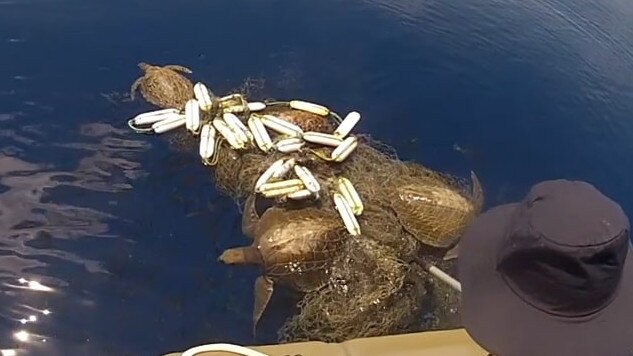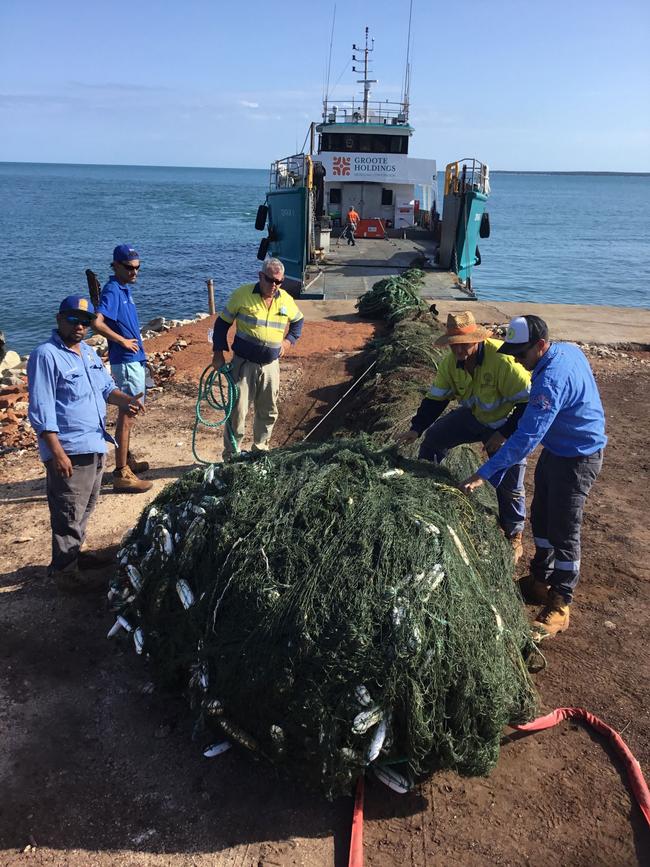Projects targeting deadly FNQ ghost nets get funding boost
Watch the video as rangers save three trapped sea turtles as efforts ramp up to clear waters around Far North Queensland of dangerous nylon ghost nets.
Cairns
Don't miss out on the headlines from Cairns. Followed categories will be added to My News.
Efforts are ramping up to clear waters around Far North Queensland of a dangerous nylon killing turtles, dolphins, sharks and fish.
The Federal Government has announced five new projects tackling the deadly problem of ghosts nets in the waters of the Gulf, Cape, and Torres Strait.
The Minister for Environment Tanya Plibersek announced a $400,000 grant to the Torres Strait Island Regional Council (TSIRC) in support of a marine debris taskforce.
Torres Strait Island Regional Council Mayor, Cr Phillemon Mosby said the grant is vital in affording the TSIRC the capacity to remove and record foreign materials from waterways, while running a two-year long education and awareness campaign.
“Ghost nets and marine debris kill and injure our sea animals, suffocate our coral reefs, damage marine vessels, and threaten the livelihood of our people, so to be able to now action a protective and restorative plan is truly fantastic,” Cr Mosby said
Ms Plibersek said the abandoned fishing gear had been killing marine animals on an industrial scale.
“Unfortunately, the removal of ghost nets and marine debris can be challenging, due to their size, remote location and strong tides,” Ms Plibersek said.
“And the plastics found in ghost nets continue to degrade.

“These plastics can remain in the marine environment for hundreds of years.”
Every year, lost or abandoned fishing gear drifts into the Gulf of Carpentaria.
These nets can be more than six kilometres long, weigh over ten tonnes, and travel great distances with the tides and ocean currents.
Five new projects were announced in Queensland including establishing the Torres Strait Marine Debris Taskforce, removing and recycling crab traps and other fishing debris, a digital marketplace to trade ghost net artworks, and developing an AI model to detect ghost nets and debris from satellite imagery.
Special Envoy for the Great Barrier Reef Senator Nita Green said ghosts nets were a big issue in Cape, Torres Strait and Gulf waters.

“The coastline of Northern Australia has one of the highest global densities of ghost net pollution, driven by prevailing currents and conditions in the Arafura and Timor Seas,” said Ms Green said.
“Up to 15,000 ghost nets have been reported in the Gulf of Carpentaria in the last 10 years.”
Endangered animals swim into the nets and then become entangled, lacerate, or strangled by them.
Nylon ghost nets are also a major contributor to the global crisis of ocean plastics, taking hundreds of years to break down.
Under current programs 195 ghost nets have been removed from the Gulf of Carpentaria, along with over 50,000kg of marine debris.
More Coverage
Originally published as Projects targeting deadly FNQ ghost nets get funding boost





